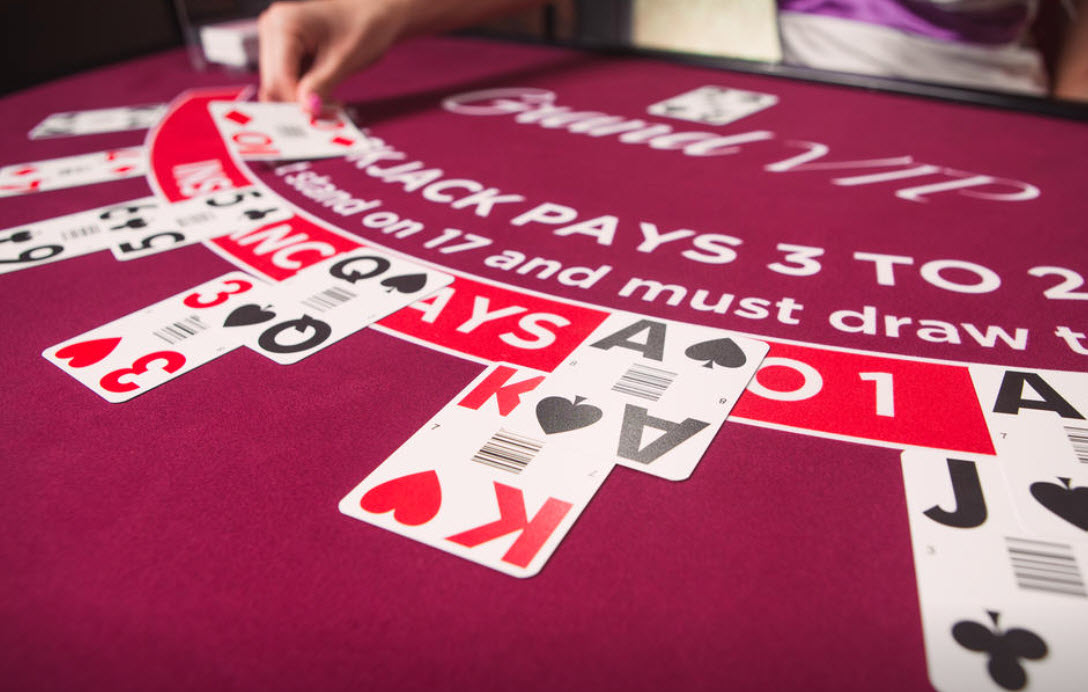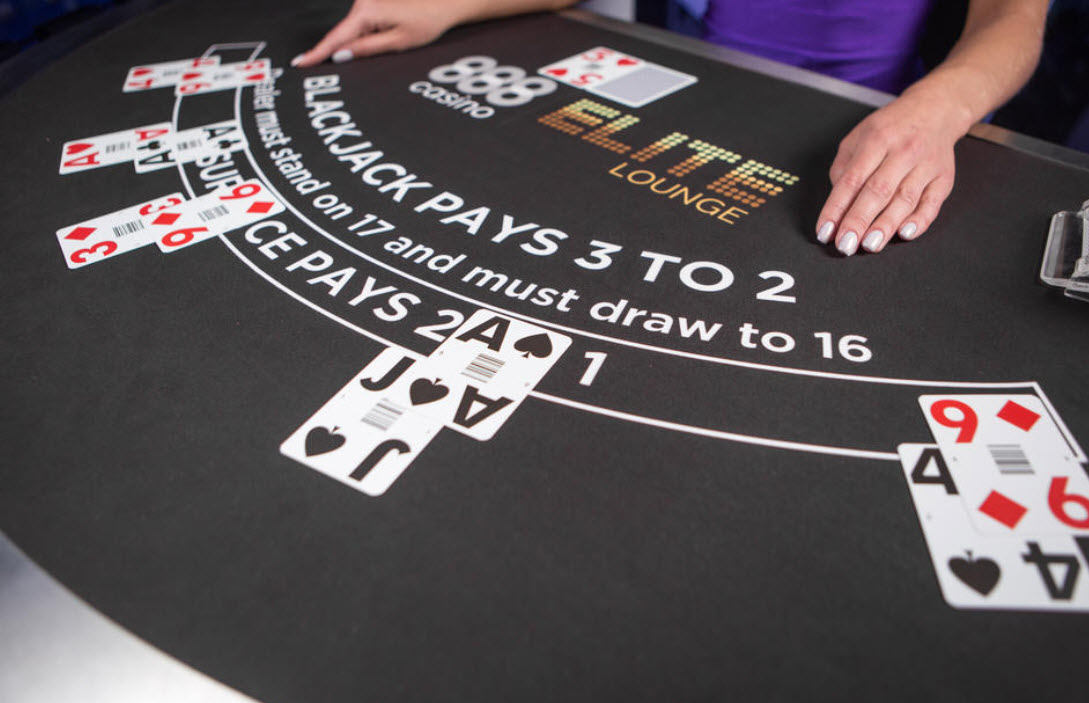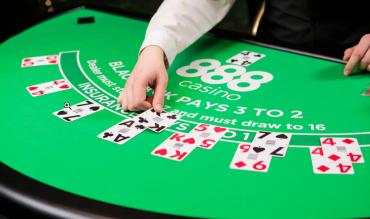When you hit hard 16 against a dealer's 10 in blackjack, you're playing probabilities. You don't know if the dealer has a pat hand or has to hit and chance busting. You don't know what you'll draw. You just know the percentages favor hitting.
In a blackjack variant called Double Exposure, the guesswork is gone. All dealer cards are dealt face up. You know whether that dealer 10 is accompanied by a 10, a 6, or something else. You have a lot more information as a basis for your play.
There are tradeoffs, of course. Ties don't push -- the dealer wins unless the tied hands are blackjacks. At some casinos, tied blackjacks push, but at some players win blackjack ties.
That means you have to be prepared to make some uncomfortable plays. If you have 20 and the dealer shows 20, you have to hit or you lose the hand. You never face a 21 vs. 21 situation. A two-card 21 is blackjack, and dealer blackjacks stop play. And dealers can only build 21s of three or more cards after player draws are finished.
Winning player blackjacks pay only even money instead of the 3-2 or 6-5 in standard games. At most tables, you can split pairs only once. And some tables restrict doubling down to totals of 9 through 11 or just 10 and 11.
Still, the allure of seeing all dealer cards is strong. You won't see Double Exposure in all casinos, but it sometimes pops up in large live casinos as well as in online casinos that give their players plenty of options.
Details on the Game
Double Exposure first appeared in the late 1970s at Bob Stupak's Vegas World, a casino on the Las Vegas site where the Stratosphere stands today. It spread to tribal casinos, especially those under the Grand umbrella, and later found homes online.
Sometimes alternate names are used, including Dealer Disclosure, Face Up 21, and some games branded with the Grand name.
Even with the compensating rules favoring the house, the ability to see all dealer cards gives the players enough that the house edge is lower than most casino games.

The specific edge depends on which optional rules are in play. In a six-deck game in which the dealer hits soft 17, double downs are allowed on hard 9 through 11, doubling after splits is allowed, multiple splits are permitted, and players win tied blackjacks, the house edge is 0.68%.
If the dealer stands on soft 17, doubles are restricted to hard 9-11, doubling after splits is not allowed, only one split is permitted, and players win tied blackjacks, the house edge rises to 0.96%.
According to Michael Shackelford at wizardofodds.com, the following optional rules can affect the house edge: Dealer stands on all 17s cuts the edge by 0.39%, double after split by 0.32%, and player wins blackjack ties by 0.22%. On the opposite side of the ledger, restricting splits to one time increases the edge by 0.71%, limiting double downs to hard 9-11 by 1.04%, and restricting doubles to hard 10 or 11 by 1.44%.
Basic strategy has to be expanded to give you the average best plays against all dealer two-card totals through 20. It has to account for dealer soft totals.
A Look at Double Exposure Basic Strategy
Let's do a little overview of basic strategy for Double Exposure in the common configuration where the dealer hits soft 17.
Player Hard Totals Strategy:
- Player has a hard 5, 6, or 7 – Note there is no hard 2, 3, or 4, which are soft totals or pairs. So with hard 4-6, double down when permitted against dealer 14, 15, or 16. If doubles aren't allowed, hit. Hit against all other totals, including soft hands.
- Player has hard 8 – Double if allowed, hit if not, vs. hard 12-16. Hit against all other totals.
- Player has hard 9 – Double if allowed, hit if not, vs. hard 5, 6, and 12-16. Otherwise, hit.
- Player has hard 10 – Double if allowed, hit if not, vs., hard 4-8 and 12-16, and vs. soft 14-16. Otherwise, hit.
- Player has hard 11 – Double if allowed, hit if not, vs. hard 4-9, 12-16, and soft 13-16. Otherwise, hit.
- Player has hard 12 – Stand vs. hard 4-6, 12-16, and soft 14-16. Otherwise, hit.
- Player has hard 13 – Stand vs. hard 4-6, 12-16, and soft 12-16. Otherwise, hit.
- Player has hard 14 – Stand vs. hard 4-6, 11-16, and soft 12-16. Otherwise, hit.
- Player has hard 15 – Stand vs. hard 4-6, 10-16, and soft 12-16. Otherwise, hit.
- Player has hard 16 – Stand vs. hard 4-6, 8-16, and soft 12-16. Otherwise, hit.
- Player has hard 17-20 – With one exception on these hands, hit if the dealer total can beat or tie yours. If you have 19, you need to hit regardless of whether the dealer has 10-9 or Ace-8. Both are standing hands.
The exception is when you have 17 and the dealer has soft 17. Since the dealer has to hit, it's best for you to stand and let the dealer take a chance at a bad draw. But if the dealer has a hard 17, you need to hit your 17.
Player Soft Totals Strategy:
If your soft total consists of three or more cards and strategy calls for double down if permitted, use the "If not permitted" strategy listed below.
- Player has soft 13 – Double if permitted, hit if not, against hard 12-16. Otherwise, hit.
- Player has soft 14 or soft 15 – Double if permitted, hit if not, against hard 6 and hard 12-16. Otherwise, hit.
- Player has soft 16 or soft 17 – Double if permitted, hit if not, against hard 5, 6, and 12-16. Otherwise, hit.
- Player has soft 18 – Double if permitted, hit if not, against hard 4, 5, and 13-16. Double if permitted, stand if not, against hard 6 or 12. Stand against hard 7 or 17 and soft 17. Hit all others.
- Player has soft 19 – Double if permitted, stand if not, against hard 12-16. Hit against hard or soft 19 or 20. Otherwise, stand.
- Player has soft 20 – Double or stand against hard 13-16. Hit against hard or soft 20. Otherwise, stand. Note that we do not double against hard 12 here, as we do on other soft hands.
Splitting Pairs
That leaves one more segment of adapted strategy for Double Exposure. Splitting pairs can get a little tricky. The basics for regular blackjack don't always apply. In standard blackjack, players are told to always split Aces and 8s and to never split 5s or 10s. That doesn't apply when you can see all dealer cards.

Let's break it down:
- Player has 2, 2 or 3, 3: Split if double downs after splits are permitted, hit if not, against hard 4-5. Also split against hard 6 and 12-17. Otherwise, hit.
- Player has 4, 4 – Split against hard 6 and 12-16. Otherwise, hit.
- Player has 5, 5 – Split if double downs after splits are permitted, double down if not, against hard 16. Also double – not split – against hard 4-8, 12-15, and soft 14-16. Otherwise, hit.
- Player has 6, 6 – Split against hard 4-6 and 12-17. Stand against hard 14-16. Otherwise, hit.
- Player has 7, 7 – Split if double downs after splits are permitted, hit if not, against hard 4. Also split against hard 5-6 and 12-17. Stand against hard 11 and soft 12-16. Otherwise, hit.
- Player has 8-8 – There are many more twists and turns than the standard "always split 8s" rule. Instead, split against hard 4-8 and 12-17 and soft 16-17. Stand against hard 9-11 and soft 12-16. Hit against hard 19-20 and soft 18-20.
- Player has 9-9 – Split against hard 4-6, 8, 12-16, 18 and soft 16-17. Stand on others except hit against hard 19-20 and soft 18-20.
- Player has 10-10 – Split against hard 13-16. Stand against others except hit against hard or soft 20.
- Player has Ace, Ace – Split against hard 4-10 and 12-16 and soft 12-17. Otherwise, hit.
Summary
If that seems a little more complex than basic strategy for standard blackjack, it is. There are more possibilities to prepare for. But many of those extra possibilities are easy to cope with once you've come to grips with the ties lose rule and are prepared to hit 17s against 17s, 18s against 18s, 19s against 19s and 20s against 20s.


